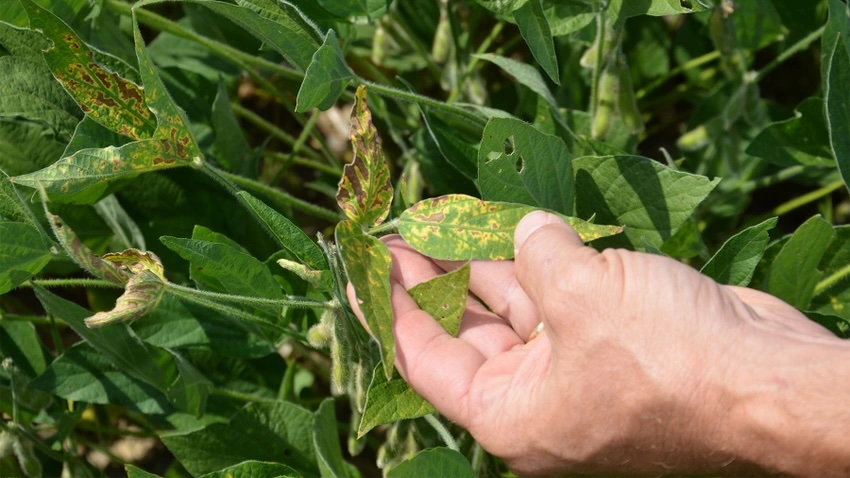Know how to identify SDS

Last year I thought we had lots of sudden death syndrome. Several people talk about look-alike conditions to SDS. How can I tell if it is SDS or something else? Whatever it is, how do I prevent it from showing up in soybeans?
The Indiana certified crop adviser panel answering this question includes Danny Greene, Greene Crop Consulting, Franklin; Abby Horlacher, Nickel Plate Consulting, Frankfort; and Brian Mitchem, Farmer 1st Agronomy Consulting Services, Decatur.
Greene: If the classic SDS leaf symptomology is found, but leaves stay attached as they mature, it might be brown stem rot, stem canker or charcoal rot. If leaflets fall off but leave petioles attached, it is most likely SDS. If you split the stem longways and the center is brown and decaying, it is most likely brown stem rot. Stem canker will have brown cankers, especially at lower leaf and stem nodes.
Once you can target the right pest, consider rotating crops to help break up disease cycles; working with your seed dealer to choose varieties that have resistance and rotating to new ones to maintain the highest levels of resistance; installing tile or improving surface drainage if wet areas are a problem; using seed treatments directed at SDS if confirmed.
Horlacher: SDS is caused by a root rot pathogen. Once you see symptoms above ground, the pathogen has already attacked the root system. Symptoms on leaves look like yellow spots between veins that turn into necrotic tissue. All main veins will stay green.
SDS is most confused with brown stem rot. If you split the stem open, SDS will have a white pith with a light-brown discoloration in the cortex. Roots will appear rotted. Brown stem rot will have a brown pith and no root rot. SDS plants drop their leaves and leave the petiole attached when the plant is dying. Other look-alike diseases will keep leaves attached when the plant dies.
There are not too many actions you can take since the disease starts in the soil. Pick cultivars that have some resistance and reduce favorable conditions for the disease. Delay planting in fields with a history of SDS until conditions are warmer, and increase water infiltration.
Mitchem: SDS typically infects plants soon after germination and is favored by slow growing conditions. The disease stays in roots until mid- to late season, when it produces a toxin that moves upward to leaves, producing symptoms. Leaf damage first appears as small yellow spots, with areas between leaf veins turning bright yellow and then turning brown, with veins remaining green. Eventually, leaves will detach from petioles and fall. Foliar symptoms can be similar to other soy diseases, especially brown stem rot.
SDS also has root damage where BSR does not. Split the lower stem through the soil line and inspect the stem and taproot. With BSR, the pith is brown while the outer stem remains green. With SDS, the pith remains white, and the outer stem is brown or gray. A blue mold can be seen on the taproot in some cases. SDS plants can be pulled easily, while BSR plants are harder to pull.
Some ways to mitigate SDS include selecting resistant varieties, using SDS-specific seed-applied fungicides, controlling soybean cyst nematodes and delaying planting to avoid cool and wet soils.

